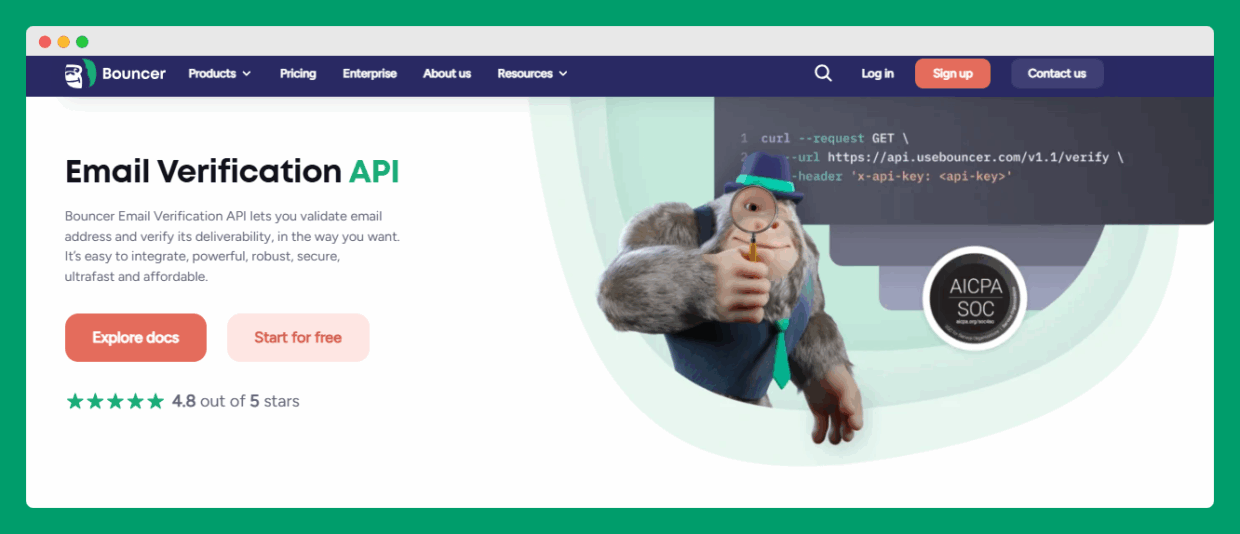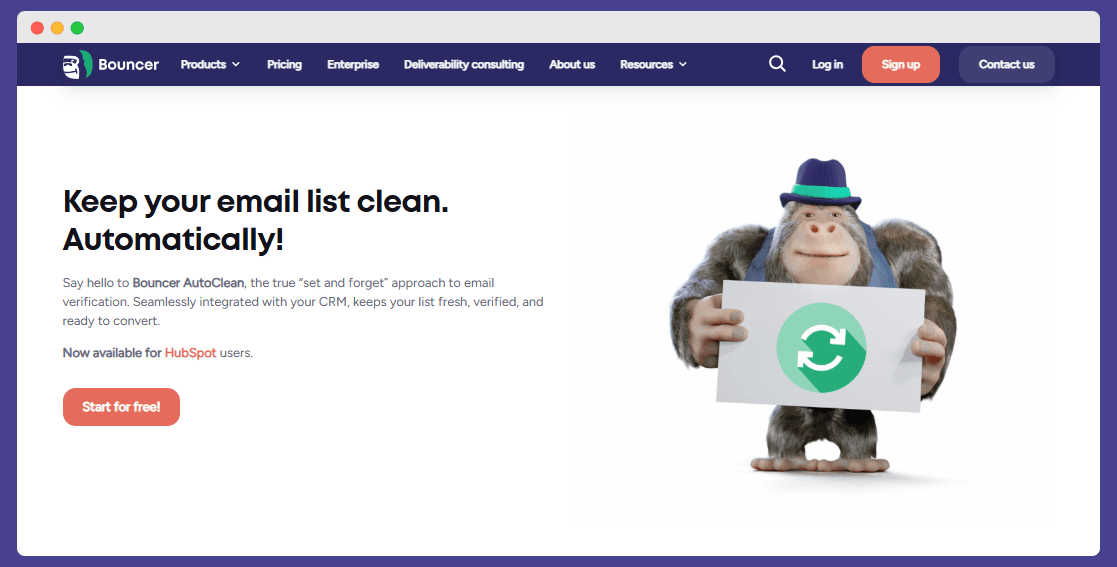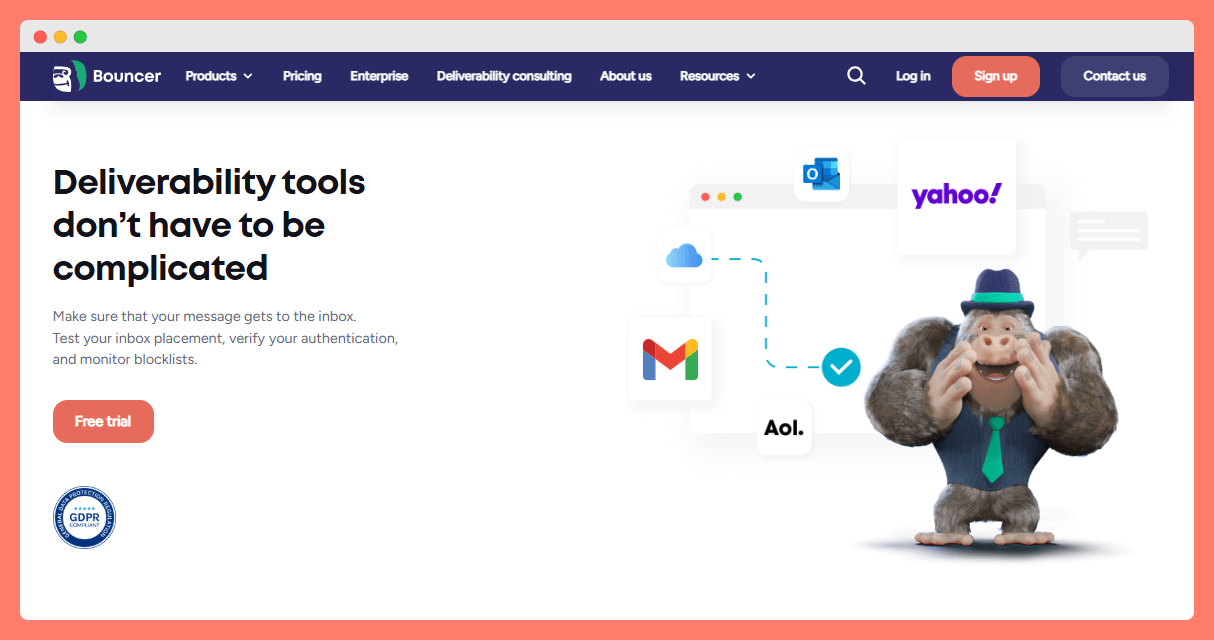That’s why high data quality and list hygiene are fundamental – for checking, verifying, and clearing out what’s holding you back. To build trust with inbox providers and keep your reputation spotless.
So, ready to give your list a fresh start? Let’s talk about how a little cleaning can take you from delivery issues to inbox wins.
What is data quality & list hygiene
Data quality means a lot. Addresses are valid. Names are spelled right. Consent is clear. Fields are consistent. You can segment without second-guessing every filter. This is clarity in the best meaning.
List hygiene is the routine that keeps it that way. You validate at capture, tidy at regular intervals, and trim what doesn’t belong.
Data quality and list hygiene lead to many, many benefits, like better deliverability, a stronger reputation, and higher revenue from email.
What “bad data” looks like
But for clarity’s sake, let’s also take a look at what messy, bad data looks like. You’ve definitely seen them before:
- Invalid or stale emails. Bounces pile up and hurt trust with mailbox providers.
- Duplicates and typos. gmall.com, yah00.com. They don’t convert and can become traps.
- Role accounts. info@, support@, abuse@ rarely behave like subscribers and often drag performance.
- Unclear consent. No permission trail, no future relationship.
Now you see: bad data weakens every part of your email program. It limits reach, damages engagement, and slowly undermines the credibility you’ve built with mailbox providers.

Why “inactive” isn’t one-size-fits-all
When you think of “dirty data,” it’s not just fake or invalid addresses. Inactive addresses, ones that have gone cold, count too. Inactive contacts dilute engagement metrics, signal low relevance to mailbox providers, and can eventually become spam traps.
And inactivity isn’t defined by a single timeline. It really depends on how often you send and what kind of audience you have.
Most marketers see 3–6 months of no opens or clicks as the point where subscribers start to fade. Others, especially in fast-moving industries, shorten that to about 90 days before moving contacts into a re-engagement or suppression segment.
But letting old contacts sit too long can backfire. Addresses that haven’t engaged for around a year may get recycled into spam traps and damage your domain reputation (even if you didn’t mean to send there).
Moreover, Gmail now prompts people to opt out after 30 days without engagement, which nudges senders to get proactive with suppression and re-engagement.
Impact on deliverability: how bad data snowballs
If you’ve ever wondered why great campaigns suddenly start landing in spam, here’s your answer: Deliverability is a trust game.
That trust depends on a few simple signals that mailbox providers track every day. When these metrics slip, deliverability follows:
- Bounces: High bounce rates flag sloppy acquisition. Providers assume you don’t maintain your list.
- Spam complaints: One “report spam” carries far more weight than a single open. Keep the unsubscribe link obvious to avoid complaints.
- Low engagement: Silent lists train filters to downrank your future sends.
- Bot activity: It influences opens and clicks. Security tools and privacy features scan links and preload images, so reports can look sunny while your site traffic stays flat.
GetResponse observed that 30–40% of recorded opens can come from automated systems. They even show how metrics drop when you exclude automation (for example, an open rate going from 25% to 17.5% in a human-only view). Thus, they can give you better decisions for subject lines, segments, and ROI.

Finally, your list doesn’t stand still. It decays by roughly 22–30% per year, which is why hygiene isn’t a one-cleaning event.
Removing inactive addresses vs re-engaging them
You don’t have to choose “delete or keep forever” for the accounts that don’t respond. Start with a calm re-engagement plan, then sunset what stays silent.
Define and segment inactivity
Break out cohorts by recency and behavior. This model works well:
- Recent inactives: no engagement in 3–6 months.
- Long-term inactives: no engagement in 6–12 months.
- Never engaged: subscribed but never opened/clicked.
Go deeper with purchase history, content viewed, or category interest if you have it. You can even tag and track key lifecycle milestones to tailor each message and incentive.
Run a short, focused re-engagement
Keep it friendly and specific:
- “We’ve missed you—still want to hear from us?”
- A light incentive or exclusive content for those who act.
- A simple preferences link to change frequency or topics.
Why bother? Because successful re-engagement campaigns commonly see 14–29% success when executed well.
A few practical markers to watch:
- For general campaigns, an average open ~17.8% and a CTR ~2.6% are common benchmarks.
- For win-backs, an open rate of around 10% is already a positive sign because this audience is colder by definition.
- An early touch can land as low as 5.2% open, then later follow-ups climb into the ~19–20% range as the message and cadence improve.
Sunset when necessary
Silence after a clean re-engagement sequence is a loud answer. You can’t leave it like that. Long-term non-responders drive down engagement averages and raise your risk profile. Thus, you need a clear sunset policy and remove contacts that don’t respond after your defined window, especially past 90 days.
Techniques & tools for maintaining high list quality
You can clean a list forever, but if your collection process is messy, you’ll always be one step behind. Getting it right at signup saves time, money, and reputation. The trick is to build quality in, not chase it later.
We can highlight here two parts: prevent bad data at the door and polish what you already have.
#1 Capture it right the first time
- 1. Double opt-in: A quick confirmation email proves the address is real and the person wants your mail. It’s a top protection against stale lists and poor engagement. It guarantees fewer typos, fewer complaints, and a cleaner reputation.
- 2. Real-time validation at signup: Stop junk before it hits your CRM. A good real-time email validation like this one from Bouncer screens out invalid, disposable, or toxic addresses at the point of collection, which lifts email data hygiene and prevents wasted sends.
Tip: Bouncer API can play this role too, to keep databases tidy without adding friction.

#2 Keep a standing suppression stack
- Unsubscribes and complaints: Honor them immediately. Complaints hurt domain and IP reputation; unsubscribes don’t.
- Hard bounces: Remove after the first definitive failure. Re-attempting permanent failures looks spammy to filters.
- Role accounts and typo domains: If your program doesn’t serve them, suppress info@, support@, postmaster@, and obvious misspellings that never engage.
#3 Clean and standardize existing records
- Deduplicate by email and customer ID.
- Normalize fields (name casing, phone formats, country codes) to unlock accurate segmentation and personalization.
- Fix syntax and domain errors so future sends don’t spike bounces.
- Track consent metadata (source, timestamp, IP). When filters tighten or audits happen, receipts beat hunches.
Here, you may also need Bouncer AutoClean – a fully automated tool that keeps your database more than just fresh. It connects directly to CRMs like HubSpot, verifies new contacts hourly, and rechecks older ones on your schedule. You can decide what happens next: keep safe addresses, suppress undeliverables, or quarantine risky ones based on deliverability and toxicity scores.
With built-in workflow triggers, AutoClean updates your CRM in real time, so your team always works with verified, high-quality data ready to send and convert.
Yes, it can be that simple.

#4 Measure human behavior, not noise
Turn on bot filtering where available. View “all interactions” vs “human-only”. Use the human-only lens for A/B decisions, re-engagement targeting, and ROI forecasts. Save the “all interactions” view for deliverability troubleshooting or historical comparisons.
#5 Re-engage thoughtfully, then move on
- Bet on a short sequence, clear ask, easy opt-out.
- Survey the fence-sitters. Use quick, one-question feedback to learn why people drifted, then tag and route them into better content streams.
- Automate the workflow. Use triggers for last open/click, last purchase, and last site visit. If no signal, sunset gracefully.
#6 Make emails easy to love
Accessibility and rendering are a must. If people can’t read or click, they won’t. Take into account mobile-responsive templates, readable typography, and tested HTML across major clients, which directly support engagement and deliverability.
Measure the impact & align quality with real value
Clean data feels better and performs better in ways you can track. When you start measuring what matters, you’ll see where the leaks are and what kind of hygiene actually pays off.
That’s why we have a few best practices:
Watch the right numbers
Start with the basics: bounce rate, complaint rate, and unsubscribe rate. These three tell you how trustworthy your list looks from the outside.
Hard bounces mean invalid or expired addresses. Complaints tell providers you’re sending unwanted content. High unsubscribe rates suggest your targeting or timing is off.
Then dig into engagement. Look at your open and click trends over time. A steady decline usually means your list is aging faster than you’re cleaning it. And don’t forget re-engagement data — how many people respond to your win-back emails versus how many stay silent says more about your brand health than any vanity metric ever could.
Conversion rate is another big one. If opens look strong but conversions fall flat, your contact quality might be to blame. You might be emailing bots or long-abandoned inboxes.
Look beyond engagement
Deliverability and engagement go hand in hand, but they’re not the same.
Deliverability is about whether your emails arrive at the inbox. Engagement is about what happens once they do. Dirty data drags down both.
When you verify contacts regularly, spam complaints and soft bounces fall. This sends a powerful signal to ISPs that you’re a careful sender. It’s also why professional tools like Bouncer have become essential for brands that send at scale. They catch invalid or disposable emails in real time, long before they can hurt your stats.
Track how quality affects ROI
Clean data changes how your marketing budget performs. Every verified address means one less wasted send and one more chance to convert. And often, improving list hygiene cuts acquisition costs because you’re no longer chasing ghosts.
In practice, the ROI story shows up like this:
- Your sender reputation improves, so campaigns reach more inboxes.
- Engagement rates climb, signaling that subscribers actually want your emails.
- Conversions rise, and unsubscribes drop because you’re talking to the right people.
That chain reaction proves data quality is a growth lever.
Use Bouncer’s Deliverability Kit
Bouncer Deliverability Kit will help you investigate your email health. It’s a simple set of tests that helps you understand where your emails land, how your domain is performing, and what could block your way to the inbox.

This kit lets you test how inbox providers treat your emails, check authentication (SPF, DKIM, and DMARC), and monitor your IPs and domains for blocklist appearances — all in one dashboard.
You can run inbox placement tests, see what percentage of your emails actually reach the inbox, and detect problems early.
It’s a simple, practical way to protect the inbox success you’ve worked for — and make sure every verified email you send actually gets seen.
Last words on data quality and list hygiene
Strong deliverability comes from one simple principle: send to people who want to hear from you.
That sounds easy, but it requires constant care — verifying new contacts, removing silent ones, and keeping systems aligned with consent. In simple words, it requires high data quality and list hygiene.
And your contact list is the backbone of your marketing. If it’s weak or polluted, everything else breaks: segmentation, personalization, conversions, even reporting.
If you’re tired of guessing which contacts are still valid, tools like Bouncer take the guesswork out. And it’s your decision how you will use it.
For improving deliverability in general, verifying email addresses, automatically cleaning data, or perhaps for API purposes? Bouncer can do it all.


